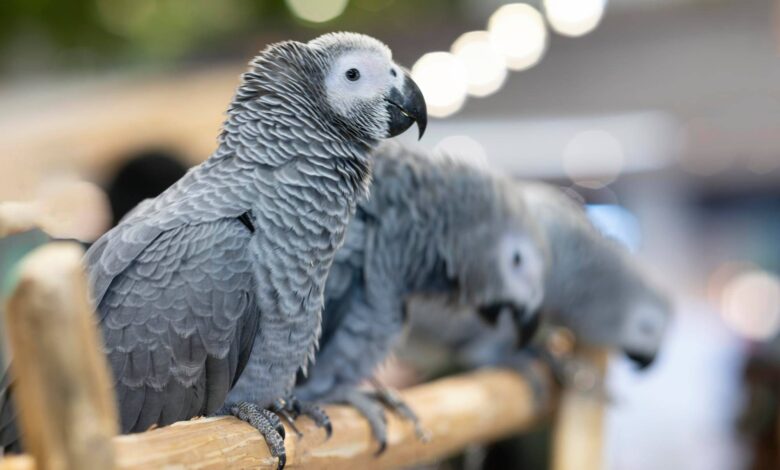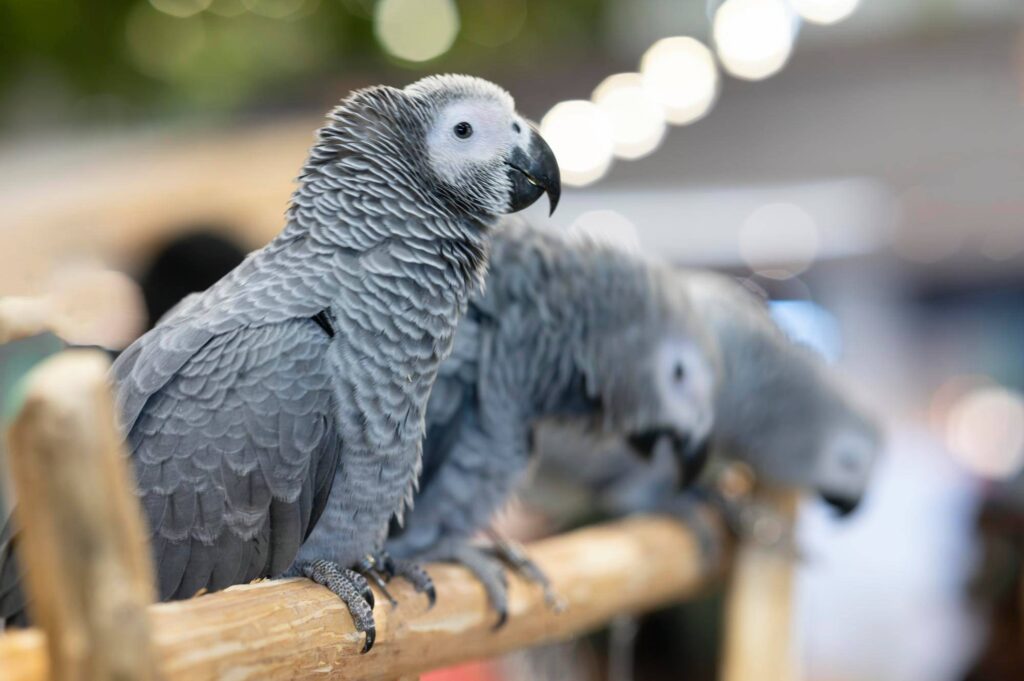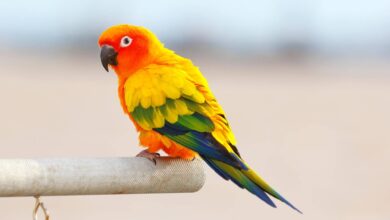
There are a lot of myths surrounding pet stores. One myth that is a popular market right now is the price of exotic birds.
Many people believe that exotic birds can only be purchased by the rich or those with a lot of disposable income.
It is simply untrue. Anyone can purchase a parrot, and it can be a great addition to your home. If you are looking for an exotic bird, this blog will help you figure out what you need to know before getting your new companion. This blog will explore “how much does a African grey cost?”
Finding a pet that is right for you can be difficult. There are so many choices; from there, you have a long-term list of things to think about. African Greys are not a bird you see very much, but they’re becoming more popular.
African Greys are a type of Parrot that are native to Africa. They are considered to be the most intelligent of all Parrots.
African Greys can express a wide variety of emotions and can live for 30-60 years. African Greys are very social birds. However, they can be very destructive.

Headline
Overview of African Grey Parrot
The African grey parrot has a well-deserved reputation among bird enthusiasts as one of the most skilled talking and mimicking birds on the planet. This intelligent bird is beloved by both bird keepers and inexperienced birders alike.
Everyone is familiar with the African grey parrot. With references to the bird in biblical times, this parrot is one of the oldest psittacine species kept by humans.
This parrot maintains its high level of appeal because of its understated elegance and no-nonsense attitude. The African grey parrots are so expensive than the other ones.
The African grey appears to be a medium-sized, dusty-looking grey bird at first glance, almost like a pigeon.
However, closer inspection shows a brilliant red tail, perceptive orange eyes, and a magnificent scalloped pattern to its plumage.
One-Time Costs: How Much Does A African Grey Cost?
You will have to make some one-time expenses when you first get the African Grey Parrot. Due to these one-time expenses, the first year of ownership is by far the most expensive. The costliest item on this list will be the bird.
We regret to inform you that your expectation that you will discover an African Grey Parrot for free is unfounded.
Finding these birds for nothing is essentially impossible. You can search online, but it’s unlikely that you’ll discover anything.
However, Congo African greys cost less than Timneh African grey parrots because they are more readily available in the pet trade.
Breeder ($500–$4,000)
You must purchase an African Grey Parrot from reputable breeders if you want the greatest one available. Although breeder rates will be more, they frequently provide free shipping, a travel cage, and toys for the bird.
The bird’s exact cost will vary depending on its type, age, gender, and other factors that affect the price of an African grey parrot, but you can anticipate paying $500 to $4,000 for an African Grey Parrot. Look around to locate an affordable African Grey Parrot.
First-time Setup and Materials ($230–$700)
You’ll need to set up the bird’s cage and residence in addition to the bird itself. To prevent the spread of infections, we advise purchasing a brand-new parrot cage rather than a used one (unless the cage belonged to the previous owner’s bird). A nice cage costs $120 and is big enough for an African Grey Parrot.
Purchasing items for the cage, such as stainless steel bowls, perches, wood, transportation, licenses, and permissions, is also necessary. You must also pay an import permission charge if you plan to transport the parrot into the United States; this amount ranges from $111 to $565.
A health certificate will probably cost money as well. A veterinarian will need to do an assessment to accomplish this. The cost of the health certificate will vary depending on the vet you visit.
Adoption ($500–$1,000)
Although purchasing an African Grey Parrot priced from a breeder is far more expensive, adopting one is still a worthwhile investment. At least you are purchasing a parrot that is accustomed to people and requires a good home.
How Much Does the Price of an African Grey Parrot Per Month?
An African Grey parrot costs between a higher price of $185 and $ 1800 per month. African Grey Parrots have monthly costs just like any other type of pet bird.
Fortunately, caring for these birds on a monthly basis is less expensive than caring for dogs or cats. Generally speaking, you must give them food, amusement, and, if required, medical attention.
Your monthly expenses should be considered if your African Grey Parrot becomes ill and needs veterinary care.
For this reason, we strongly advise purchasing exotic pet parrots insurance. An African Grey’s pricing will depend on the quality of its genetics.
If you are worried about the genetic heritage of your bird, which may be a worry if you plan to breed birds for your own pets, you can conduct DNA testing.
Medications and Veterinary Visits
Given the rarity of these birds, medical costs may increase if your African Grey Parrot becomes ill. Depending on the disease, emergency care for these birds might cost anywhere between $300 and $1,200.
Remember that you are also responsible for the cost of the individual vet appointment. The average visit to exotic vet costs between $100 and $250.
Health Care And Food
A balanced diet, exercise, and mental stimulation are essential for the well-being of African Grey Parrots. The African Grey Parrot should be in good health if you provide it with the correct diet and a tidy cage.
Having said that, you do need to take the bird for an annual examination at an exotic vet. In the best-case scenario, you should only spend $100–$250 per year on your parrot’s medical needs. Unless it is old or sick, you shouldn’t have to pay for it on a regular basis.
However, the African Grey Parrot’s food is the most noticeable monthly expense. Your African Grey Parrot will typically cost you between $45 and $70 per month for groceries. It costs roughly the same amount per month as feeding a cat or dog, possibly less for larger dog breeds.
Baby African Grey Insurance
We strongly advise pet insurance if you took the time and made the financial investment to buy an African Grey Parrot. The annual cost will probably range between $200 and $400. That equals roughly $20 to $40 every month.
You might also open a parrot savings account. When your parrot is hurt, this savings account will come in handy, and you won’t have to pay an insurance company for it either. In either case, make sure you have a backup in case your bird becomes ill!
As you can see, the cost of owning an African Grey Parrot isn’t all that much higher than that of a dog. In fact, it probably costs less. You won’t likely pay more than $200 a month if the parrot is healthy. If the bird becomes ill or injured, prices spike.
If you want to obtain legal ownership, it is advised to purchase pet insurance for these birds due to the high costs of medical care and veterinary care. Open a savings account for a rainy day, at the very least.
What about licensing, laws, and registration?
African Greys cannot be purchased in the wild, and international trade in these birds is prohibited. African Greys should only be purchased from reputable bird breeders. Before picking them, verify a breeder’s membership in a reputed parrot association or organization.
It is also worthwhile to conduct a Google search for the seller’s name to check what reviews the company receives. Because African Greys are an endangered species, each nation and state has its own set of laws you must abide by when dealing with them.
Final Remarks
We hope you enjoyed our blog post on “How Much Does A African Grey Cost?” We know that many people are interested in acquiring an African grey, so we wanted to give you some insight into their cost in this blog. We hope this information helps you make a decision about whether or not you want to adopt an African grey for your family. Thank you for reading. We would love to hear from you!


